STREET SPACES AND ROADS
The street space is characterised by the fact that space is often limited. At the same time, it is a space with many specific functional programmes and a need to maintain an unobstructed flow and accessibility along (and in some places across) the space. The space is divided into two zones: an area along the buildings for pedestrians, which also provides a place for spending time, and a road that runs parallel. Security measures should be placed in the transition between these two zones.
The starting point for the examples shown is an urban space with common fixtures, such as lighting, signage etc.
It also presupposes that there is no parking along the road.
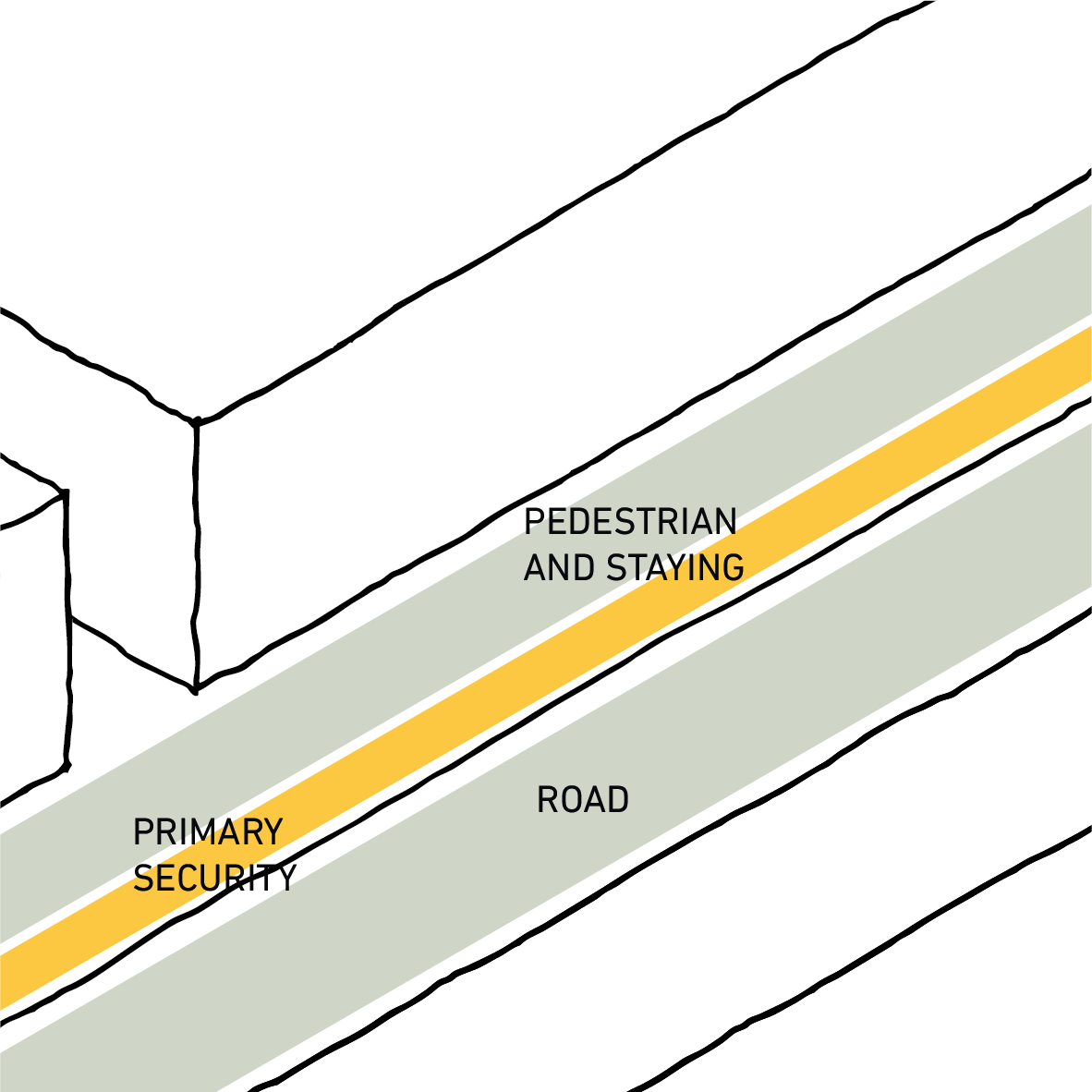
Protection of the pavement and any building behind it
Focus on safety in the transition zone between the pavement and the road.
Security wishes
The design should signal that passage by vehicles will be difficult and, therefore, a deterrent, while this should not be perceived as such by daily users.
Preventing attacks with accelerating vehicles, e.g., at pavement cafes.
Create distance to important buildings, so that vehicle-borne explosives cannot get close to them
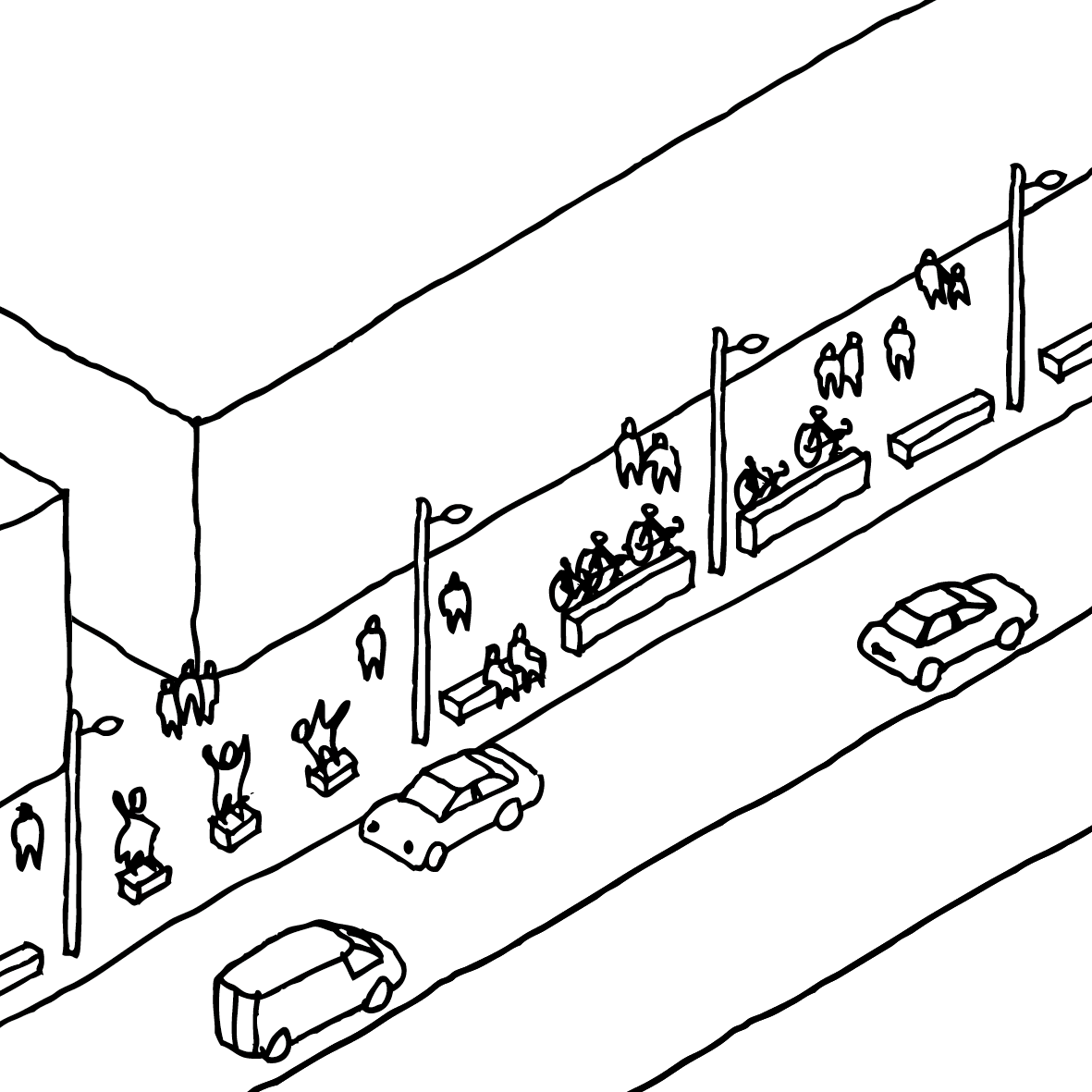
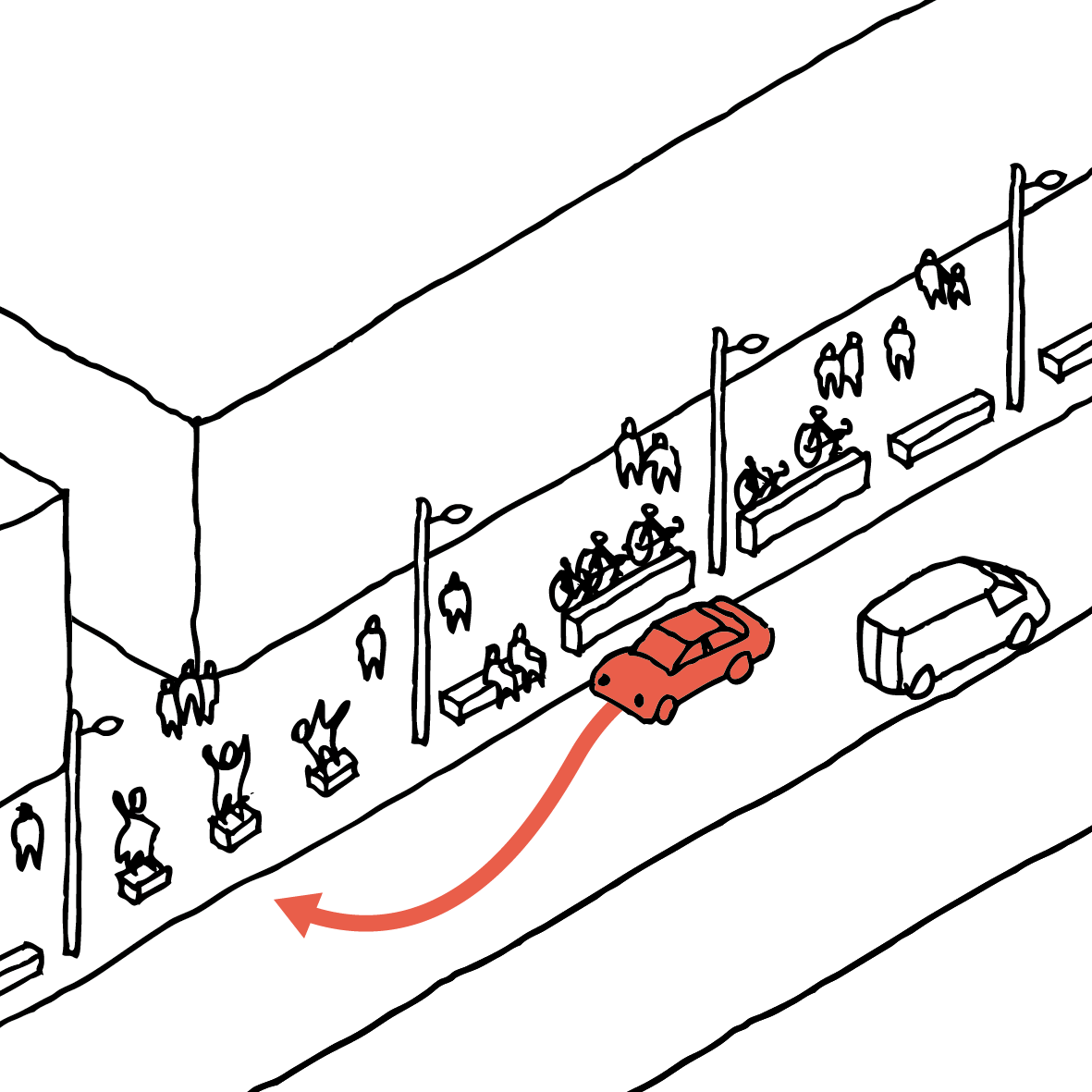
Integrated and reinforced urban furniture
The zone between the pedestrian area and the road is secured with various urban furniture, e.g., benches, sculptures, shelters, planters, bicycle stands, lighting, etc.
Based on the agreed security level, a decision is made whether the equipment should be able to stop or simply hinder and delay the route to the target.
If reinforced urban furniture is needed, it can either be designed with security in mind or, e.g., reinforced via additional anchoring/foundations or via an integrated core of an already certified product.
Focus must be on simultaneously ensuring good visibility as well as accessibility.
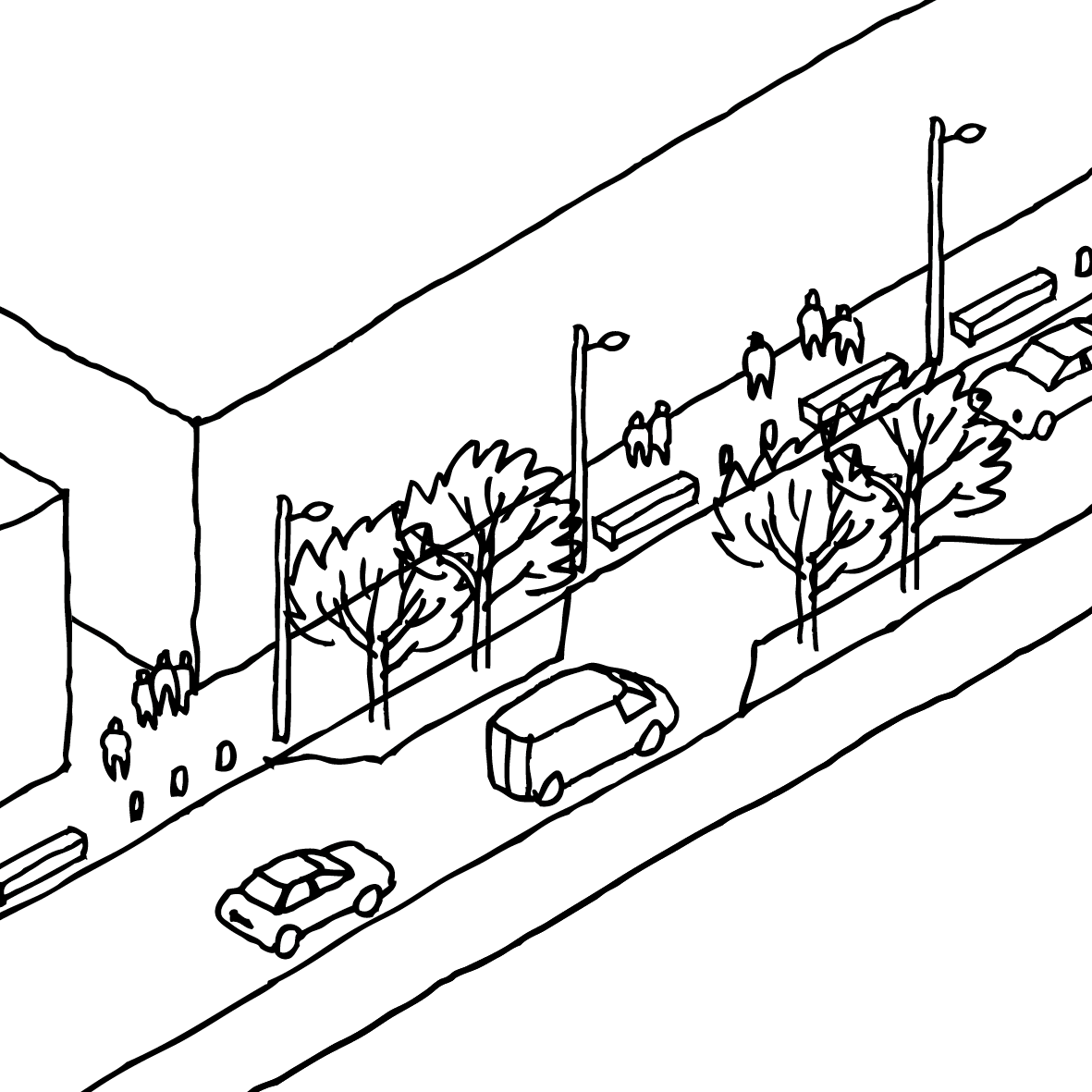
Speed reduction measures
Speed reduction measures can help prevent vehicle collisions, as vehicles are prevented from accelerating towards the target.
Measures may include narrowing the carriageway or traffic calming measures to give the road a curved course.
The traffic calming measures can, e.g., be designed as planters or rainwater ditches.
Reinforced, city-owned inventory is placed between the traffic calming measures.
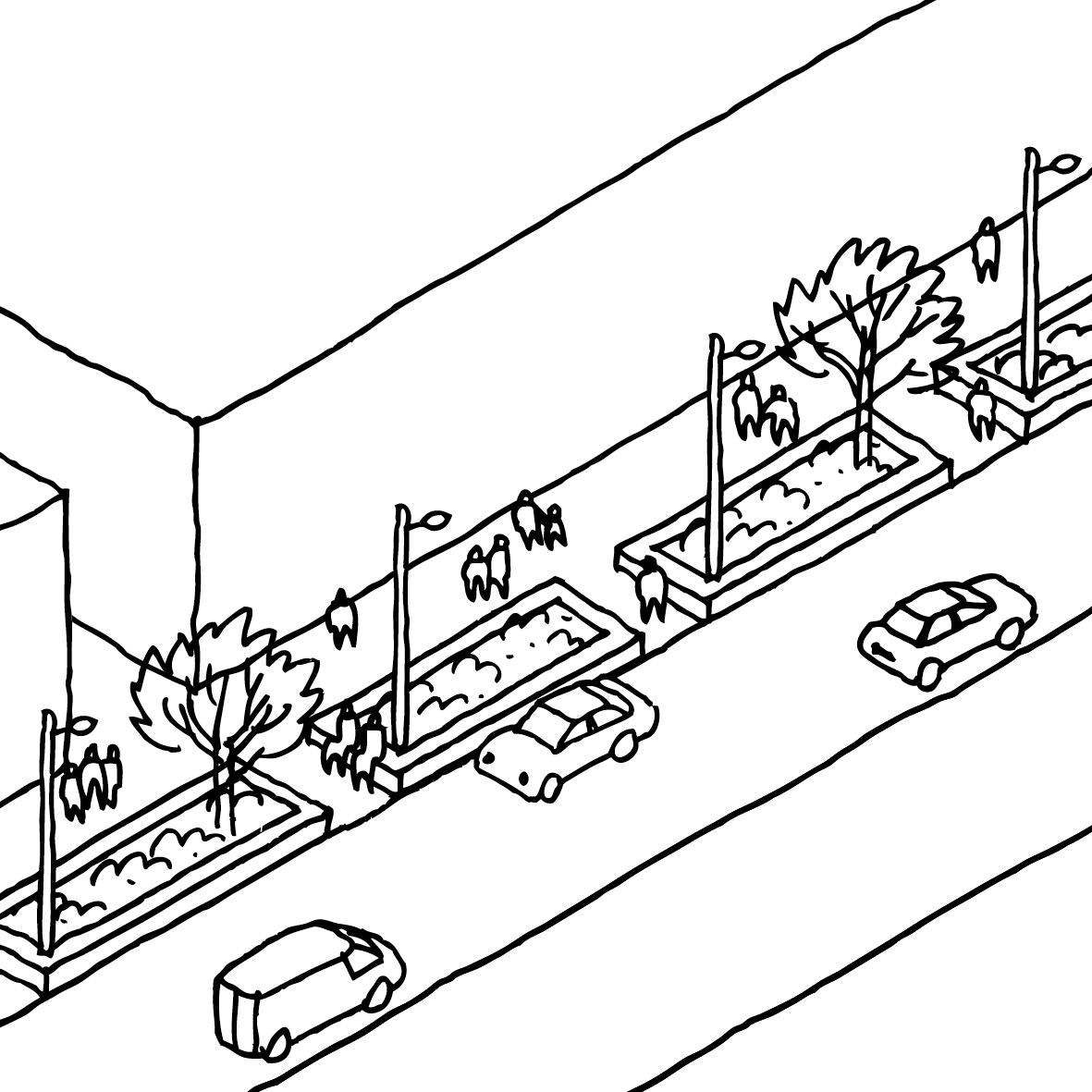
Planters and edges
The zone between the pedestrian area and the road is secured with raised planters that form part of the urban space as a unifying element.
The edges of the planter protect against impact from encroaching vehicles.
The edges also function as benches, allowing for informal seating.
In addition to significant transverse connections, the possibility of passage is ensured.
The focus must be on ensuring good visibility and road safety at the same time.
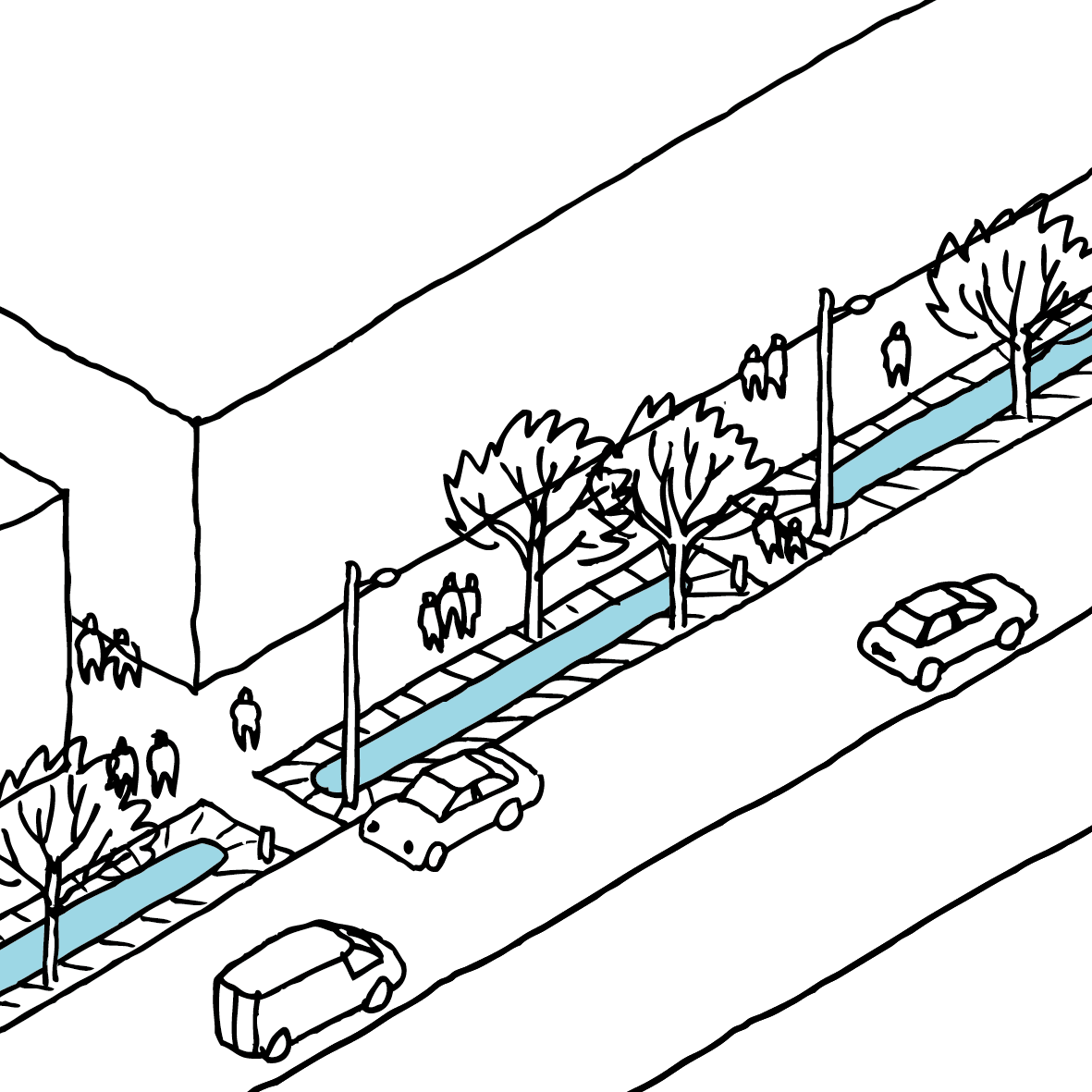
Water
The zone between the pedestrian area and the road is secured with a water element.
The water element is designed with sloping sides or edges that allow it to be included in the protective measures.
In addition to protective security measures, it is also possible to consider the water element as part of a climate project for the area.
Narrow passageways are incorporated.

